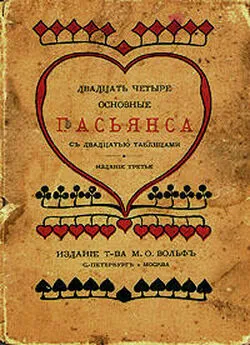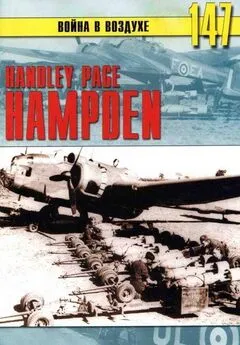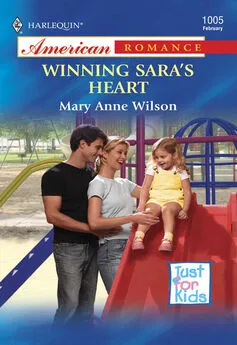Rick Page - Make Winning a Habit [с таблицами]
- Название:Make Winning a Habit [с таблицами]
- Автор:
- Жанр:
- Издательство:неизвестно
- Год:неизвестен
- ISBN:нет данных
- Рейтинг:
- Избранное:Добавить в избранное
-
Отзывы:
-
Ваша оценка:
Rick Page - Make Winning a Habit [с таблицами] краткое содержание
A master of the complex sale and a bestselling author, Rick Page is also one of the most experienced sales consultants and trainers in the world. Make Winning A Habit defines the gap between what companies know to do and how they consistently perform.
Page clearly identifies five “Ts” of transformation: Talent, Technique, Teamwork, Technology and Trust. These five elements, when fully developed and integrated into the sales and marketing organization, begin to create the habit of winning over customers in every industry. Stories of successes-and failures-from members of prominent companies help you apply the five “Ts” to your company's culture, and point the way to more effective plans for motivating employees, building and coaching winning teams, and improving hiring processes.
Then, with the use of Page's assessment scorecard, you can compare your company with some of the strategies and practices of the best sales forces in the world. Designed to gauge your organization's effectiveness and further develop breakthrough sales growth, this scorecard highlights your strengths and weaknesses, helping you bridge the gap between where you are and where you need to be.
You'll also learn about:
The “Deadly Dozen” (pains sales managers feel today) and how they can kill business
A ten-point process for identifying and hiring nothing less than “A” players
The 8 “ates” of managing strategic accounts and how they will maximize revenue and elevate relationships
How to identify and correct the six most common areas of poor individual sales performance
With Make Winning A Habit, you'll discover the obstacles between you and the consistent sales performance you can achieve-and find the tools to not only make success a habit, but one that will keep growing with your business.
Make Winning a Habit [с таблицами] - читать онлайн бесплатно полную версию (весь текст целиком)
Интервал:
Закладка:
Partnering is obviously a powerful company-to-company business model, but fewer than 10 percent of your candidates can achieve this special relationship, which must reach all the way up to the CEO level.
Size is not the issue. It’s a matter of their culture. It’s how the organization buys and sells value. You can judge it by the way the organization treats other vendors. If the organization doesn’t partner with anyone else, it isn’t going to partner with you.
ROI Alone Is Not Enough
In the area of pain, one observation we’ve made over the last few years is that in a down economy, return on investment (ROI) alone will not compel an opportunity to close. Many training programs that address selling to executives focus on the financial benefits exclusively by teaching how to calculate the benefits of your solution and then calculate a stream of cash flow and an ROI on that assumed cash flow.
One of our clients was selling new point-of-sale systems to Wal-Mart. In their eight-store pilot, they determined that, using their systems, Wal-Mart could save $2 million a year, spread over eight stores, or $250k per store per year.
But, since they didn’t link the savings to any strategic opportunities for Wal-Mart, it was no surprise the pilot went on for two years with no closure.
In the grand scheme of things, they failed to recognize that $250k per year per store wouldn’t get anyone’s attention.
For a company that does almost $300 billion a year, a $250k annual savings is merely a rounding error.
There weren’’t enough zeros in their value proposition to be compelling.
ROI is now a requirement to get in the game. It is no longer a differentiator but a satisfier. We can look at forecasts and tell you which deals are going to stall. Where your solution is not linked to compelling value (emotional and political pain associated with a powerful person), it is probably not going to close anytime soon. Logical arguments alone are insufficient. It takes a crusader — a powerful person inside the organization who wants it to happen — to get resources from other projects or money in the budget and assume the risks of any new procurement.
Jack Barr tells a story of when he was competing to win the Hershey account while at SAP:
“I was involved in a very competitive situation, selling manufacturing/order processing software to the Hershey Company in Pennsylvania.
My competitor and I were called in to present to the executive committee. Before the meeting, I went through my presentation with my internal coach to make sure it hit the mark. My coach told me that, as a company, Hershey was very focused on children .
Milton Hershey, the company’s founder, never had a formal education.To him, providing this opportunity to others was an important priority. He and his wife established a school for orphans and made sure that the town of Hershey had the finest elementary and secondary schools possible. Every year, millions of dollars are donated to the Hershey Foundation, which continues to fund the orphanage and schools.
‘Everything is about the children when it comes to Hershey,’ my coach said. ‘A percentage of our net profit goes to the Hershey Foundation every year. So before we do anything for the business, we always ask ourselves,Will it benefit the children?’
Based on that conversation, I added one slide to my presentation that figured how much our solution could save the company in inventory costs. I was able to show them how much this savings would add to their bottom line and how many additional millions of dollars could be donated to the Hershey Foundation, by the Hershey Company, as a result over the next five years.
Though my competitor’s solution would also have saved them in inventory costs, he didn’t present it with the same linkage to the emotional and personal benefit to the Foundation that I did.The feedback I got, after I won the deal, was, ‘Jack really understood what we are all about.’ ”
Someone (or a group of people) with power needs to see the vision and opportunity of how a solution can help his or her organization defeat the competition, enter new markets, regain and/or capture customer share, produce significant shareholder value, or provide a competitive advantage to the company.
Gary, a sales rep reporting to Jerry Ellis, one of our principals, was selling planning solutions systems to a large health care organization.
Together, they had gained access to the company’s vice president of finance, Bruce, who reported directly to the CEO.
While meeting with Bruce, they asked him why he was planning to replace the current use of Excel in his organization with a new budgeting and planning solution. Bruce responded with a long list of reasons why the current use of Excel required was overly time-consuming and caused his team to work long hours, including weekends, to meet the continually changing requests of senior management.
After listening to Bruce’s explanation of the frustration the current approach caused his team, Jerry said, “I know senior management is concerned about your team’s quality of life, but the tool you are using now gives them the information they are asking for. I doubt they will spend $250k just to make your life easier. How will you justify our solution to them?”
Bruce then explained the real strategic justification he would use for the new system: It would allow them to move newly acquired health care facilities into their overall process faster, which would ultimately save them money faster and enable them to more quickly add to the overall bottom line.
This team knew that without linking the purchase to more strategic pains, Bruce would not receive funding approval. Through this questioning, they confirmed that the solution could be linked to the strategic gains of powerful stakeholders and that the project sponsor could articulate linkage between their solution and these strategic gains.
Relationships Alone Are Not Enough, Either
Another flaw we see in some organizations is that they focus on building preference through linking solutions alone or through relationships alone. If you focus on linking solutions alone, you ignore the power of relationships. There are over 50 ways that people build influence with each other.
Stephen Covey, in his book The Seven Habits of Highly Effective People, refers to this as “building emotional bank accounts with each other.” I’ll trust you for two reasons: (1)because you’re an expert, you’re reliable, you can solve my problems, you have the company and the functionality behind you, and I know you’ll get the job done, or (2)because we went to school together, you know my family, you’re my friend, you know my business, you’ve worked with us before, and I know you’ll work night and day to get things done for me.
But what if it’s a tie? If it’s a tie, I’m going with my friend. Whenever the product or solution is a tie, relationships are the differentiator. But when it’s a high-risk situation and I’m betting my job or the company on it, I can’t go to the committee or my management and say, “I prefer this company because the salesperson is my friend.” I have to provide a business case for why I prefer you over another company.
Frankly, we’re just not that lonely.
Likewise, many salespeople are counting on relationships alone. They are professional friends, or they think they can get by on their personality, by entertaining their clients, and by being grateful for the business. This just isn’t enough anymore. Buyers want better business values.
About a year ago I spoke with a trade association, and the head of procurement for a major electronics retail organization was there. He said something to the effect of, “People call on us all of time saying that they want to be partners and build a relationship with us. Yes, we do have partnerships. We have about 3 strategic alliances and 12 preferred vendors. But everybody else is a commodity to us and we put them out for reverse auctions. People come by and say they want to have a relationship with us. Frankly, we’re just not that lonely.”
While there are some lonely buyers out there, they still have to build business value for having selected your company. In relationships alone, you can linger, but you can’t last. On solutions alone, you may get outsold while you have a superior product if you don’t have strong enough relationships.
Our principal, Joe Terry, was working a big deal once where the divisional vice president had the power of a “gorilla” in an algebraic democracy. His vote counted “the sum of all votes plus one.”
Joe had a good relationship with the vice president, based on previous experience, and assumed that he had a preference for our firm.
But in the executive presentation, the vote came down to five for Joe and one against him. After some research, Joe discovered that the vice president was also personal friends with the competitive salesperson and played golf with him every week.
Turns out, the vice president, who we thought was our ally, was the one vote for the competition.
Joe knew that he had the superior solution, so he went to the vice president and said, “I know you have a difficult decision to make because you are also friends with my competitor.”
After talking with Joe, the vice president agreed that Joe’s solution would achieve his strategic objectives and that it would be very risky for him to try to achieve those same objectives with the competitor’s solution.
Joe suggested that the vice president abstain from the vote and allow the other five people on the committee to make the choice. This way, he could tell his friend, Joe’s competitor, that he had been outvoted.
This proved to be a way for the vice president to save face with his friend and to reach his business objectives by going with the better solution.
Joe won the deal, and the vice president became one of the biggest supporters that drove the initiative throughout the company.
The key to this strategy was to recognize that personal preference was only good if he could also solve the problem. Had Joe not had a relationship with the vice president, he probably could not have had this type of discussion with him. And if he had not had a superior product, relationship would have not been enough to win the deal.
The Six P’s methodology includes the elements that need to be attended to in order to win a complex sale. We teach them sequentially, but in fact, salespeople use them simultaneously.
Once you qualify an account with a dispassionate process, you use a combination of a stakeholder analysis and a metaphor of the sales cycle which we have named the canyon and crucible (see appendix Figure A-1).

The stakeholder analysis identifies each buyer’s pain, power, part, and preference in order to determine a plan to win the heart of each of the key voters or live without it. This process is overlaid with the canyon and crucible, which is a chronologic assessment of the dynamics of changing issues and decision-making politics as they go through a competitive evaluation. Combined, we’ve put a time dimension on the sales cycle.
The best practice in the industry today is to take your sales cycle and define it in terms of the phases that are unique to your company and your industry. Salespeople tend to do the right things in the sales cycle, just not always at the right times. And timing is critical. How you coach depends on which phase of the sales cycle you are in. In general, we want salespeople doing things earlier than they have been doing them before. The other reason that phases are important is that they match your forecasting process.
Читать дальшеИнтервал:
Закладка:
![Обложка книги Rick Page - Make Winning a Habit [с таблицами]](/images/nocover.webp)


![Сергей Снегов - Язык, который ненавидит [с иллюстрациями и текстовыми таблицами]](/books/1097573/sergej-snegov-yazyk-kotoryj-nenavidit-s-illyustrac.webp)




